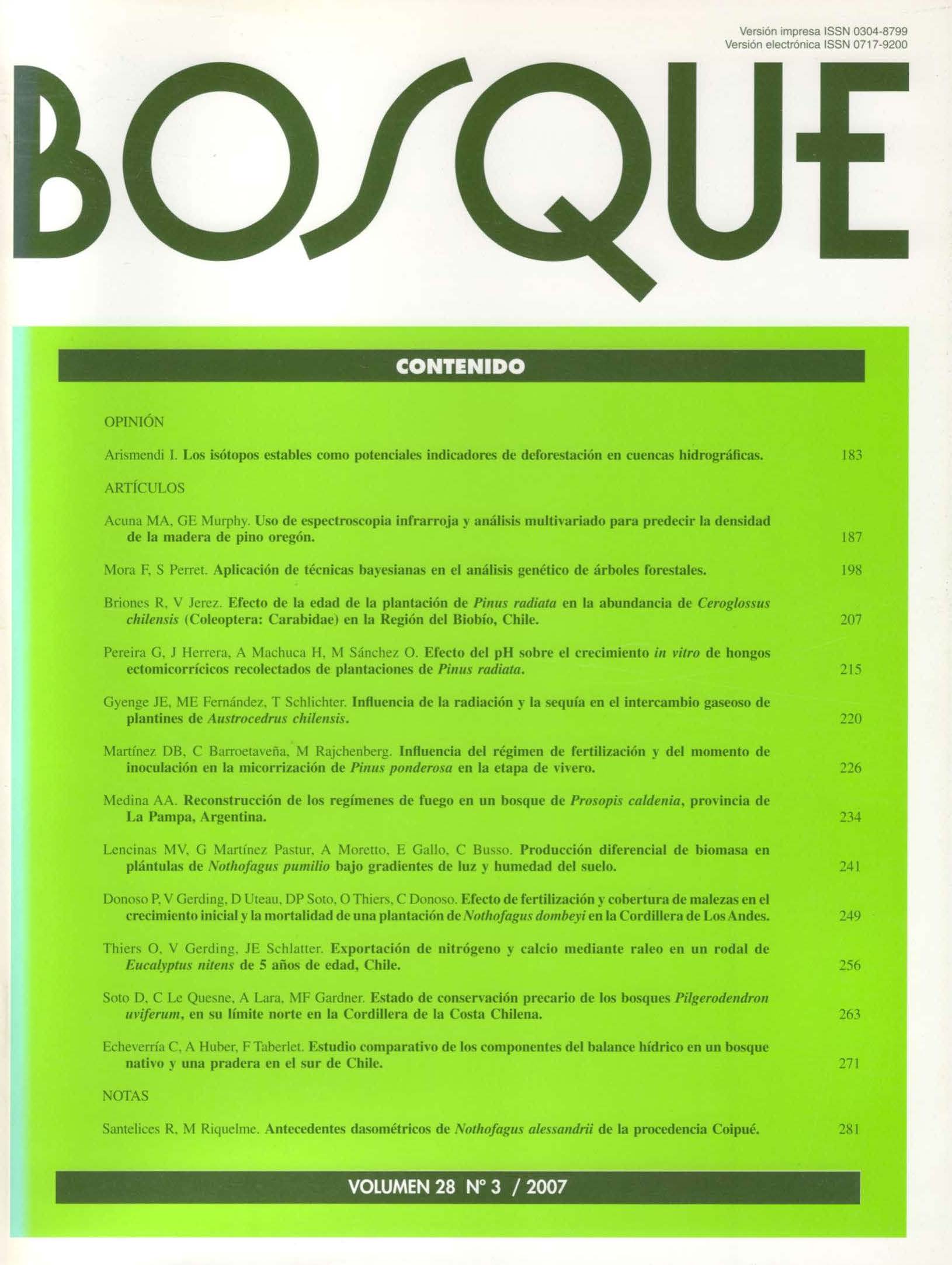Main Article Content
Dec 31, 2007
Abstract
Pilgerodendron uviferum, ciprés de Las Guaitecas, is a long-lived member of the family Cupressaceae; it is dioecious, and endemic to the temperate forests of South America. Its geographic range extends over 1,600 km, from 39º35’S (Valdivia Province, Chile) to 54º20’S (Cape Horn), making it the conifer with the southernmost distribution in the world. North of 42º S latitude, the species is restricted to small, discrete forest stands in waterlogged soils. This paper describes four previously undocumented stands of P. uviferum in south-central Chile (39º50’) –extending the known northern limit of the species in the Chilean Coastal Range (CCR)– and highlights its precarious conservation status. These small stands (< 2 ha) are isolated within a matrix of pastures and exotic forest plantations, and are subject to chronic disturbance by livestock grazing, logging, and burning. On the basis of dead burned snags and stumps, we estimated that recurrent burning and logging have resulted in a 57% loss of P. uviferum stems, and an 80% loss of basal area in these stands. Current land use regimes in the study area are causing multiple threats to the viability of these stands. We recommend to develop a restoration program in order to preserve these geographical outlying P. uviferum populations.


